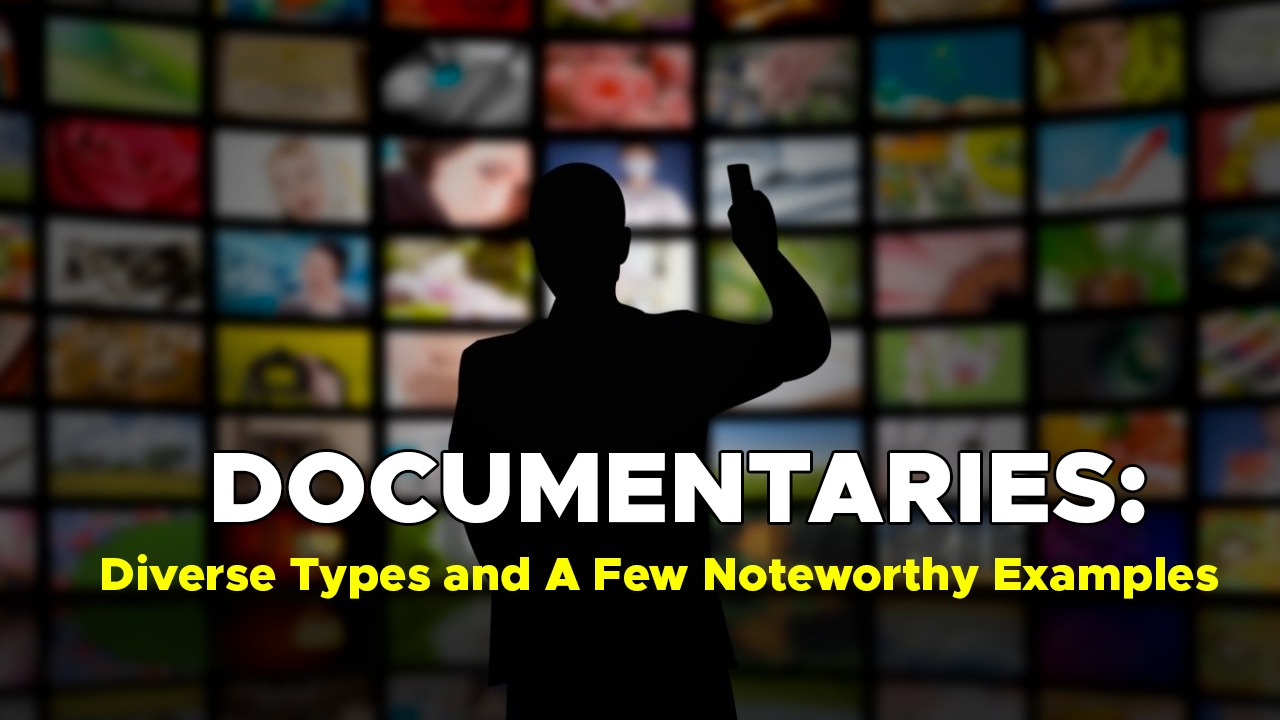Introduction:
Documentaries are a captivating medium that offers unique perspectives on real-life events, individuals, and societal issues. They educate, inform, and inspire audiences by shedding light on various aspects of the human experience. Within this genre, there are several distinctive types of documentaries, each employing its own style, purpose, and approach. In this article, we will delve into a selection of documentary types, including some additional categories like poetic and reflexive, accompanied by notable examples that have made a significant impact.
1. Historical Documentaries:
Historical documentaries provide factual accounts of significant past events, utilizing archival footage, interviews, and expert analysis. They offer a comprehensive understanding of the subject matter. A prime example is "The Civil War" (1990), directed by Ken Burns, which chronicles the American Civil War through a combination of photographs, letters, and first-person accounts.
2. Biographical Documentaries:
Biographical documentaries focus on the lives of notable individuals, exploring their achievements, struggles, and impact on society. They provide an intimate portrait of the subject. "Amy" (2015), directed by Asif Kapadia, is a poignant biographical documentary that chronicles the life and tragic death of singer-songwriter Amy Winehouse, revealing her career and personal challenges.
3. Environmental Documentaries:
Environmental documentaries raise awareness about ecological issues, aiming to educate viewers and inspire action. They highlight the impact of human activities on the planet and advocate for sustainable solutions. "An Inconvenient Truth" (2006), directed by Davis Guggenheim, features former U.S. Vice President Al Gore as he presents a compelling case for addressing climate change urgently.
4. Social Issue Documentaries:
Social issue documentaries shed light on pressing societal problems, focusing on marginalized communities, injustices, and systemic challenges. They provoke empathy, foster dialogue, and drive social change. "13th" (2016), directed by Ava DuVernay, explores racial inequality in the United States through the lens of the criminal justice system, examining the disproportionate incarceration of African Americans.
5. Observational Documentaries:
Observational documentaries adopt a fly-on-the-wall approach, capturing real-life situations as they unfold without intervention or narration. They provide an unfiltered and immersive experience, allowing viewers to draw their own conclusions. "Hoop Dreams" (1994), directed by Steve James, follows two African American high school students in Chicago as they pursue their dreams of becoming professional basketball players, offering an intimate portrayal of their challenges and aspirations.
6. Expository Documentaries:
Expository documentaries inform and educate viewers by presenting a specific argument or viewpoint on a subject. They employ interviews, expert analysis, and facts to construct a persuasive narrative. "Super Size Me" (2004), directed by Morgan Spurlock, explores the health consequences of consuming fast food through the filmmaker's 30-day experiment of eating only McDonald's meals.
7. Poetic Documentaries:
Poetic documentaries emphasize the aesthetic and emotional aspects of storytelling, often using artistic visuals, metaphors, and lyrical narratives. They evoke deep emotions and offer a more interpretive and subjective experience. "Koyaanisqatsi" (1982), directed by Godfrey Reggio, presents a powerful visual journey featuring time-lapse footage and mesmerizing cinematography to reflect on humanity's relationship with technology and nature.
8. Reflexive Documentaries:
Reflexive documentaries turn the camera inward, examining the process of documentary filmmaking itself. They raise questions about the nature of representation, truth, and the relationship between the filmmaker and the subject. "Exit Through the Gift Shop" (2010), directed by Banksy, blurs the line between documentary and mockumentary as it explores the world of street art and the enigmatic figure known as Mr. Brainwash.
9. Participatory Documentaries:
Participatory documentaries involve active participation from the subjects or communities being documented. Filmmakers collaborate with the participants, empowering them to contribute their own stories and perspectives. "The Act of Killing" (2012), directed by Joshua Oppenheimer, features former Indonesian death squad leaders reenacting their crimes, blurring the line between reality and performance to confront the dark history of the country.
10. Investigative Documentaries:
Investigative documentaries delve deep into uncovering hidden truths and exposing corruption, often focusing on political scandals or social injustices. They employ rigorous research, interviews, and evidence to bring important issues to light. "Citizenfour" (2014), directed by Laura Poitras, documents the story of Edward Snowden and his revelations about mass surveillance by government agencies, sparking a global conversation on privacy and civil liberties.
11. Experimental Documentaries:
Experimental documentaries push the boundaries of traditional storytelling techniques, using unconventional narrative structures, abstract visuals, and innovative editing styles. They challenge viewers' perceptions and invite them to engage with the subject matter in unconventional ways. "Samsara" (2011), directed by Ron Fricke, is a visually stunning documentary that takes the audience on a mesmerizing journey around the world, exploring the interconnectedness of humanity and nature.
Conclusion:
The world of documentaries is rich and diverse, encompassing various styles, approaches, and themes. From historical accounts to biographical explorations, from environmental concerns to social issues, and from poetic reflections to reflexive examinations, each type of documentary offers a unique perspective on the human experience. By immersing ourselves in these thought-provoking films, we can expand our knowledge, challenge our preconceptions, and gain a deeper understanding of the world around us. So, the next time you embark on a documentary-watching journey, consider exploring the vast tapestry of documentary types and let them captivate, inform, and inspire you.

Comments